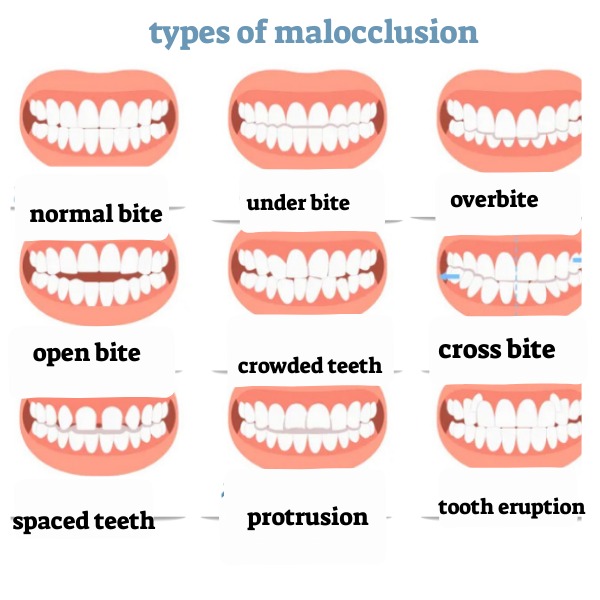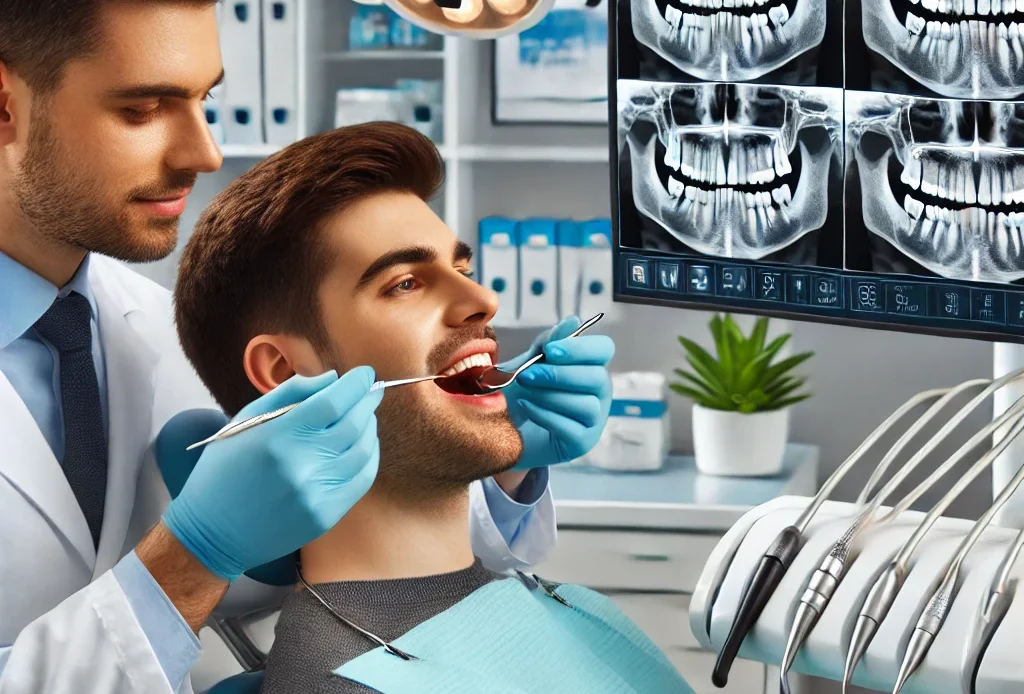Wondering if the symptoms you’re experiencing are signs of tooth misalignment? This is a critical matter because tooth misalignment, also known as malocclusion, is one of the most common oral disorders. The bothersome symptoms it causes should be addressed proactively whenever possible to enhance your quality of life. So, let’s dive into this important topic together and explore what tooth misalignment is, its symptoms, and the main reasons behind it—all with the aim of preventing it whenever we can.
Do You Feel You Have Symptoms of Tooth Misalignment?
It’s well-known that the ideal solution for many cases of tooth misalignment is orthodontic treatment. At Al Dur Al Manthour Clinics, we provide all the orthodontic services you need. Don’t worry if your child struggles to pronounce certain letters—we offer specialized care at our clinics for children and individuals with special needs, ensuring you can address any malocclusion issues with us and enjoy a smile that suits both you and your child. Contact us for the best offers!
Tooth Misalignment and Its Types
Tooth misalignment occurs when the jaws don’t align properly upon closing the mouth. In a healthy bite (as shown in the image of proper occlusion), the upper teeth slightly overlap the lower teeth. However, incorrect jaw positions during biting or closing come in many forms, making this a widespread disorder. According to a research article on the U.S. National Library of Medicine’s website, tooth misalignment is particularly prevalent in urban areas.
Here’s a quick overview of the main types of tooth misalignment:


Types of Tooth Malocclusion
- Deep Bite: A type where the upper teeth excessively overlap the lower teeth.
- Crossbite: Occurs when the lower jaw shifts slightly forward, aligning with the upper jaw.
- Crowded Teeth: When teeth overlap due to insufficient space, often from early loss of baby teeth without using a space maintainer or similar cases.
- Open Bite: Seen in individuals whose upper and lower teeth don’t meet when the mouth closes.
- Spacing: A common misalignment where large gaps exist between teeth, with upper teeth spreading excessively apart (as shown in the image).
- Underbite (Reverse Bite): The lower teeth protrude beyond the upper teeth, worsening if the lower teeth jut out excessively.
Causes of Tooth Malocclusion
While genetics is the primary cause of improper jaw alignment in most cases—meaning if your parents have this issue, you’re likely at risk—there are also hidden factors that can lead to tooth misalignment and its painful symptoms. Key causes include:
- Early loss of baby teeth in children without maintaining proper spacing or monitoring dental health.
- Poor dietary habits in childhood, such as excessive sugar or fried food consumption.
- Persistent thumb-sucking beyond age four.
- Tongue-thrusting against teeth for over three years.
- Biting nails or hard objects like pens for extended periods.
- Ill-fitting dentures.
- Tooth loss or extra teeth without seeking repair or implant services.
Understanding these causes and addressing them at Al Dur Al Manthour Clinics can help prevent this issue.
How Tooth Misalignment Is Diagnosed
Dentists can easily diagnose tooth misalignment during a clinic visit, often using dental X-rays—one of the most reliable methods to confirm the condition.
Symptoms of Malocclusion
Before listing the symptoms of malocclusion, note that some cases show no symptoms at all and may not require immediate treatment. However, if one or more of the following symptoms appear, intervention and treatment will be necessary depending on severity:
Difficulty Chewing and Biting
In some cases, tooth misalignment causes injuries to the gums, lips, or tongue during biting, chewing, or speaking. Jaw joint or muscle pain, especially while chewing, is common, inevitably leading to difficulty with chewing and biting.
Changes in Facial Appearance
Tooth misalignment can disrupt gums and teeth, potentially causing tooth loss. This may force mouth breathing instead of nasal breathing, altering facial shape and affecting performance and self-confidence.
Loose Teeth
Some cases feature loose or wobbly teeth that shift from their position, causing tension and discomfort.
Speech and Pronunciation Difficulties
Since speech heavily relies on teeth, many with misalignment struggle to pronounce certain letters correctly. Severe cases may face broader speech challenges.
Frequently Asked Questions
Does Tooth Misalignment Cause Pain?
One of the main symptoms is jaw and tooth pain, stemming from decay, facial shape changes, or gum and tooth disorders. Pain varies from mild to severe based on the misalignment’s intensity.
What’s the Treatment for Jaw Misalignment?
If you have jaw misalignment, your dentist may refer you to an orthodontist. While some general dentists offer orthodontic care, severe malocclusion requires a specialist. Options include removing teeth in cases of severe crowding, reshaping teeth, jaw surgery, or using wires or plates to stabilize jawbones. However, if misalignment is minor or symptom-free, braces may not be necessary—not all cases require orthodontics.
How Do I Know If I Have Malocclusion?
If you experience the symptoms mentioned earlier or notice your jaw alignment matches one of the illustrated incorrect bites when closing your mouth, consult a dentist. They may request an X-ray for confirmation and explain whether you need braces and which type suits your case.

